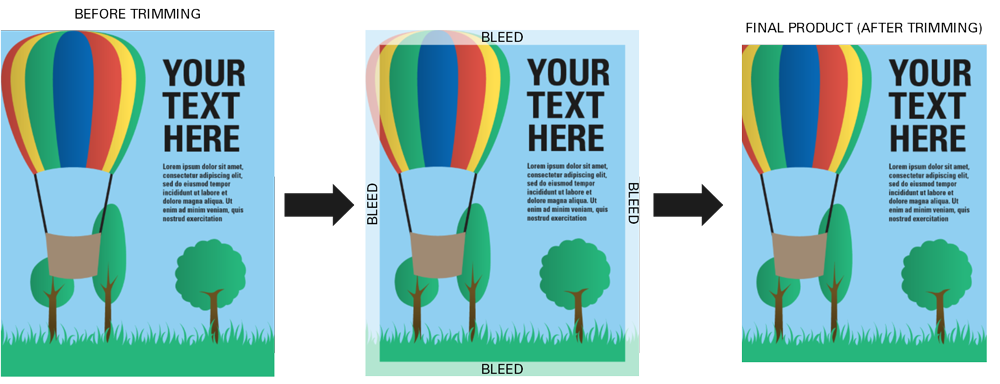A bleed is the effect achieved when graphic elements go to the edge of a printed piece. This could include photos, patterns, text, background colors, and anything else that has been printed to the edge.
A bleed is achieved by extending the background (and any other elements that bleed) beyond a printed piece’s edges. The extra is then trimmed off. Typically, an extra .125” (1/8-inch) is included for trimming to achieve a bleed.
For example, an 11 x 17 poster that bleeds should be designed with an extra .125” on each side, making the actual printed size 11.25” x 17.25” . The extra .125” on each side is then trimmed after printing, leaving the final 11 x 17 poster with a bleed.

Tricks to creating a printed piece with a bleed:
- Set your page size to be 1/4" taller and 1/4" wider than the final size. It may be necessary to create a custom page size.
- Keep in mind that 1/8" from each side will be trimmed off the final piece, so plan accordingly.
- Leave an adequate margin from the edges for trimming. 1/4" from the trimmed edge is recommended. This means 3/8" from where the bleed starts. A larger margin is always okay!
Tip! Some design and layout software like Illustrator, InDesign, Publisher, and Scribus, allows you to set a bleed "margin" without needing to change your actual page size. They also give you the option to include the bleed and cropmarks when saving your file a s PDF for printing.